Rabies is a disease dangerous to both animals and humans. Having recognized the signs of rabies in an animal, it is necessary to immediately take precautionary measures and isolate the patient as soon as possible.
Contents
- The cause of rabies in dogs
- The first signs of rabies in dogs
- Signs of rabies in dogs. Symptoms. What to do?
- How to check the dog for rabies?
- Incubation period of rabies in dogs
- Do you need vaccination against rabies dogs and when to do it?
- Vaccination for rabies for dogs: side effects
- Can a vaccinated dog get rabies?
- Rabies treatment in dogs
- Rabies prevention in dogs
- Video: Veterinarian about rabies prevention: how to recognize rabies, what to do and where to go
Rabies( hydrophobia) is always associated with dogs - the main carriers and distributors of this deadly disease. In fact, rabies is dangerous for all warm-blooded creatures.
There are several forms of rabies:
- violent - the most common form, occurs in 3 stages. Begins with an apathetic state, non-standard behavior of the animal. In the course of the development of the disease, aggression occurs, limb paralysis, coma and death
- quiet - the dog is not aggressive, eats well, but swallows heavily. Hind limbs and jaws lose sensitivity
- recurrent - characterized by alternate improvements and deterioration of the animal's condition, lack of mobility and apathy
- abortive - extremely rare form in which the animal recovers
- atypical - sluggish form, can last up to six months. All this time the dog can have diarrhea and vomiting
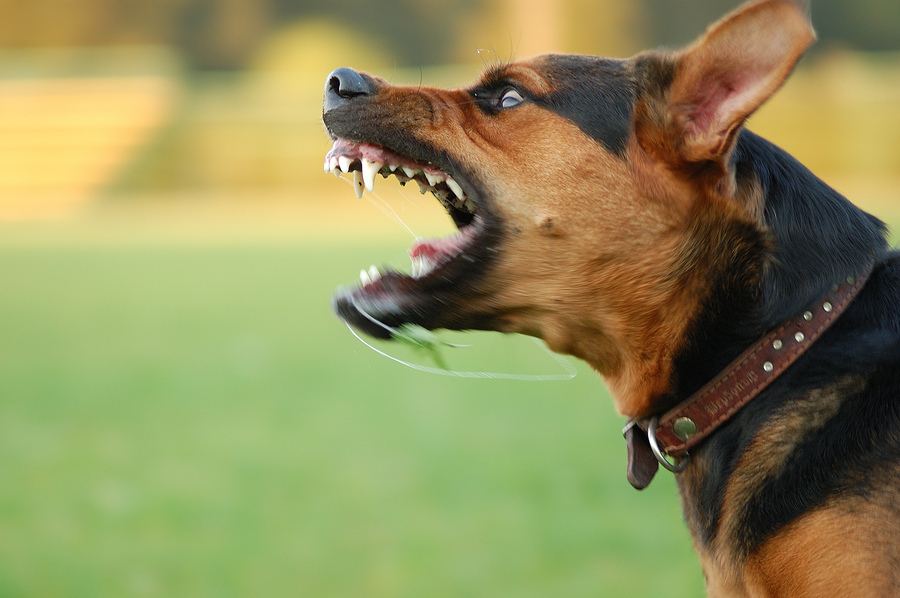 Violent form of rabies in the dog
Violent form of rabies in the dog IMPORTANT: All forms of rabies are equally dangerous to humans.
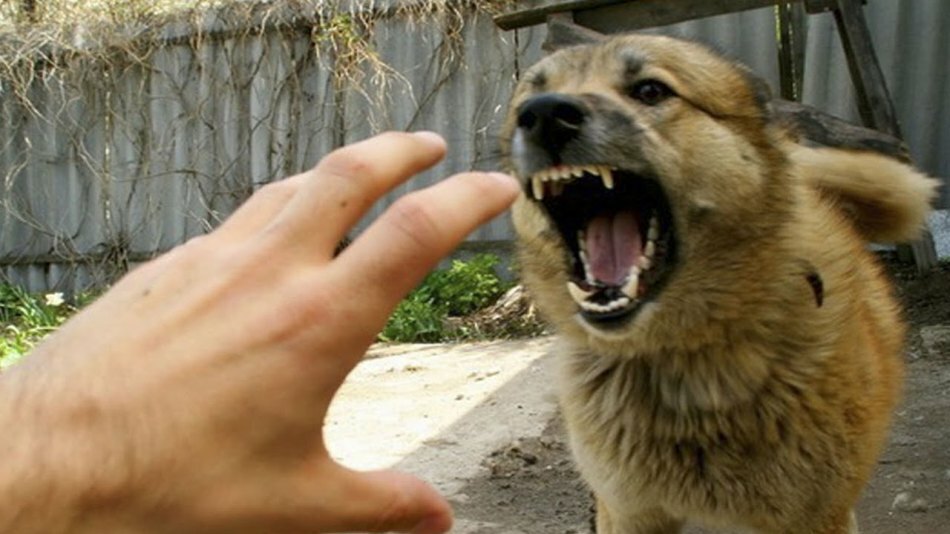 A mad dog can infect a person.
A mad dog can infect a person. The cause of rabies in dogs
The main cause of rabies in dogs is the bite of a sick animal. The greatest chance of catching rabies in dogs living near forests and steppes inhabited by sick foxes, wolves, hedgehogs, raccoons and other wild mammals are warm-blooded. Also in the high-risk zone are hunting dogs.
The dog washes to catch rabies by eating a sick mouse or rat. In this case, there will be no signs of biting or scratching the animal's body, which will complicate the diagnosis.
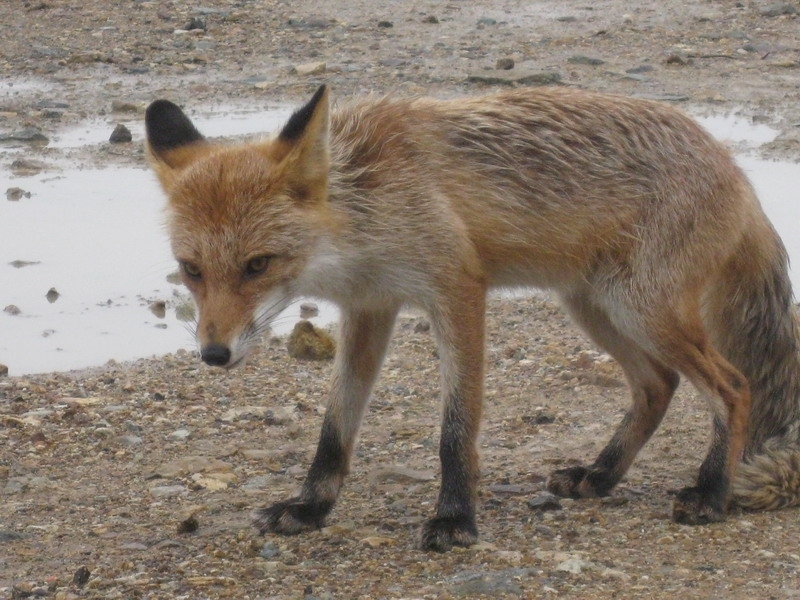 Rabies spreads sick wild and stray animals
Rabies spreads sick wild and stray animals IMPORTANT: Even those dogs that are kept in apartments are at risk of becoming infected with rabies after accidental contact with a sick animal. A small amount of the carrier's saliva is enough to transmit the disease.
A serotype virus that causes rabies is found in the blood, biological fluid and saliva of a sick animal. Dogs can even just lick each other - this will be enough to infect.
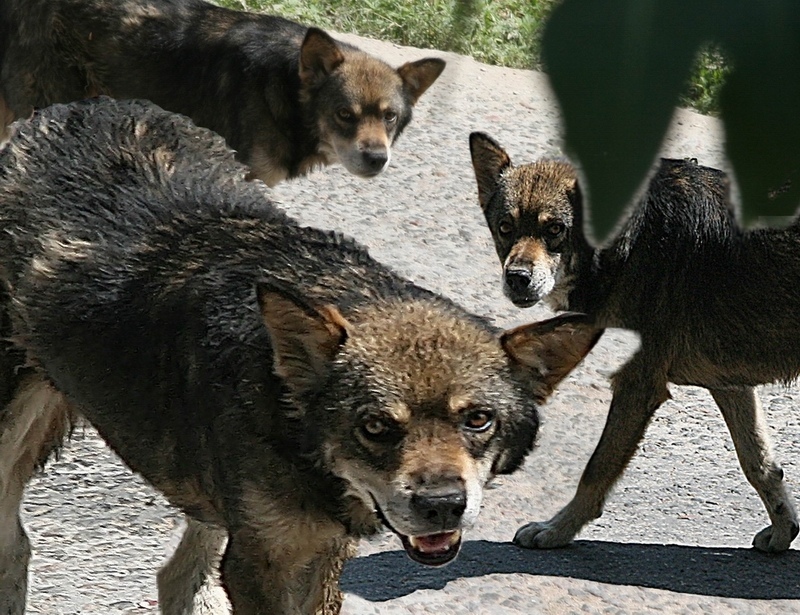 Stray dogs are carriers of rabies
Stray dogs are carriers of rabies The first signs of rabies in dogs
The first( early) stage of the course of rabies in a dog is characterized by the presence in the animal of such symptoms:
- increased irritability, not previously characteristic of the dog
- fear of the sun and bright artificial lighting
- chill
- restless behavior, fussiness
- rejection of any food
- hoarse voice, unusual bark
- vomiting
- liquid stool
- inability to swallow food or swallow saliva
- cough
To symptoms of the later period carry:
- paralysis of the hindlimbs, gradually spreading throughout the body
- constantly open mouth, lowering the jaw
- strong saliva, "foam" on the lips
- no aggression
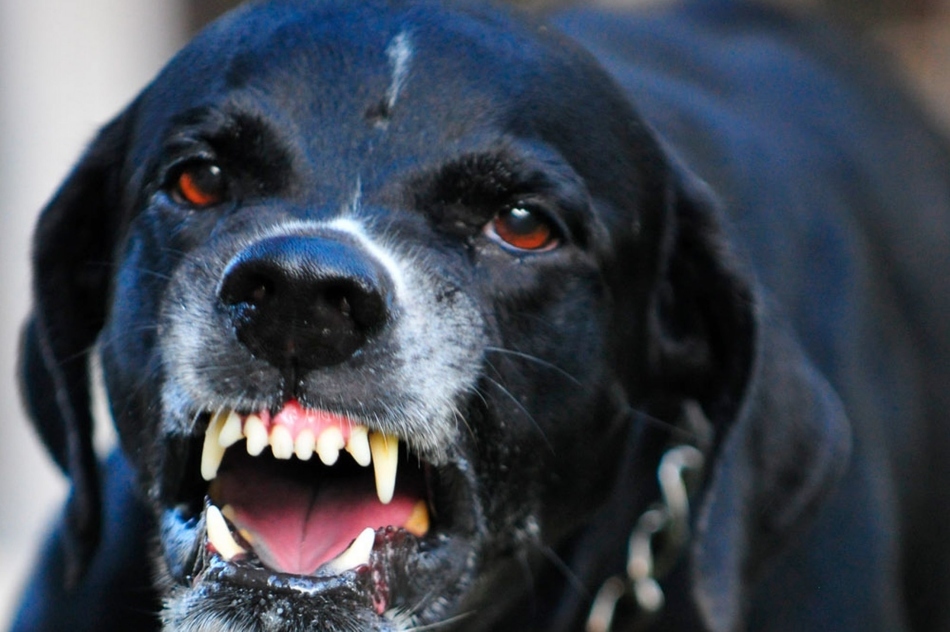 Aggression is one of the late signs of rabies in the dog
Aggression is one of the late signs of rabies in the dog The late symptoms of development of the most common violent rabies are:
- anxiety and even panic fear at the sight of water or the sound of bubbling
- foam on the jaws of
- vicious grin, willingness to attack, aggression
- excessive irritability
- causelessattacks of humans and other animals
- Inadequate behavior: attempts to eat stones, chew your tail
IMPORTANT: If you have found signs of rabies in your dog, urgently aboutratites to the vet and isolate the animal.
Signs of rabies in dogs. Symptoms. What to do?
How to check the dog for rabies?
If the dog lives in a dysfunctional area, has been in contact with other animals, there have been cases of rabies registered in the district and its behavior after that seems strange, it is necessary to check the dog for rabies.
First of all, the skin of the animal should be carefully inspected for signs of bites, fresh wounds, scratches and other injuries. If any suspicious violations of the integrity of the skin are detected, you need to contact the veterinarian as soon as possible.
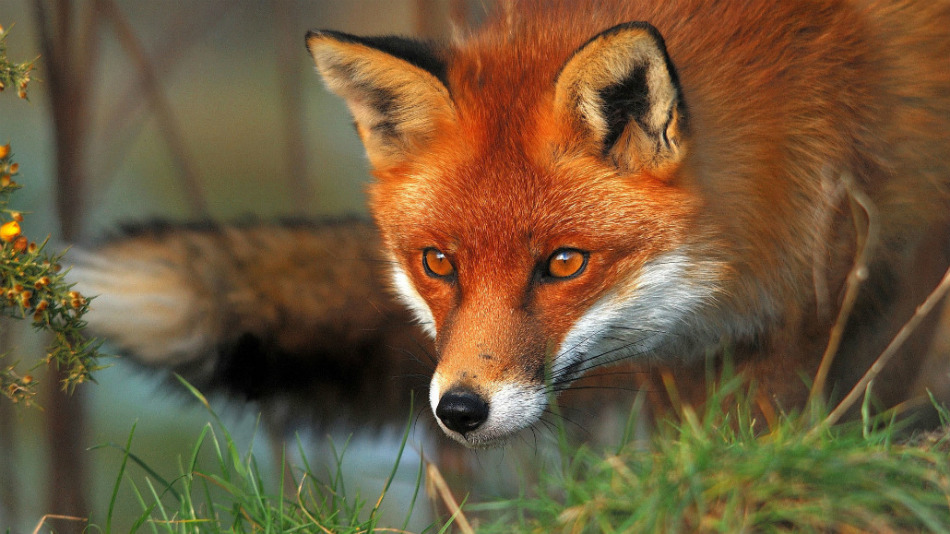 After fighting a rabid wild animal, the tracks of the dog will remain on the body of the dog
After fighting a rabid wild animal, the tracks of the dog will remain on the body of the dog IMPORTANT: Once on the skin and the dog's fur, the rabies virus remains viable for about 2 hours. Therefore, before you take the animal in your arms, you need to worry about your own safety: wear long pants and a sweater, do not touch the dog with your bare hands.
It's impossible to accurately determine if the animal is rabies. There are no tests or tests, the results of which could confirm or deny the presence of the disease. The exact answer, whether the dog is infected by rabies, can only give an examination of the cells of the animal's brain.
Incubation period of rabies in dogs
The incubation( latent) period of rabies in dogs, as in other animals, lasts from 3 to 6 weeks. Before the appearance of obvious signs of the disease, the virus is already in the saliva, blood and physiological fluid of the dog. At this time, the animal can already infect others.
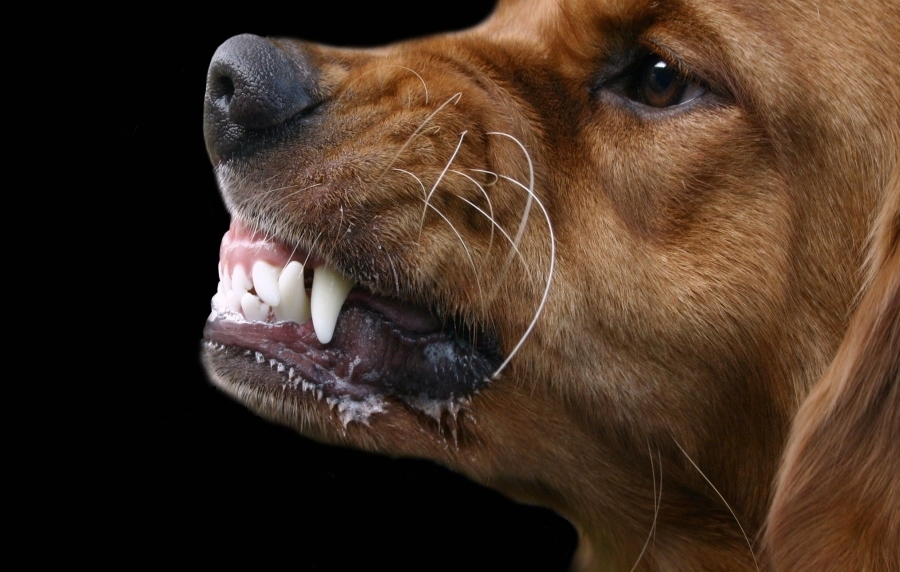 During the incubation period, dogs can infect rabies with other animals and humans.
During the incubation period, dogs can infect rabies with other animals and humans. Do vaccines need rabies to dogs and when to do?
Vaccination is the only way to protect your pet from becoming infected with rabies. Vaccinate rabies vaccine in veterinary clinics. The only condition of vaccination is the absolute health of the dog.
IMPORTANT: For 10 to 14 days before vaccination, the dog needs to be dewormed.
Persistent immunity against the rabies virus is produced by the body of the vaccinated animal 21 days after the vaccination.
In the vaccination passport, the veterinarian makes a record of the procedure performed, indicating the date of vaccination, the duration and type of vaccine.
IMPORTANT: If a vaccine is planned for a puppy not protected from other viral infections, it is better to call a veterinarian at home, rather than take the animal to the clinic, exposing the risk of contracting no less dangerous diseases.
In state veterinary clinics vaccination against rabies with domestic vaccine is free of charge.
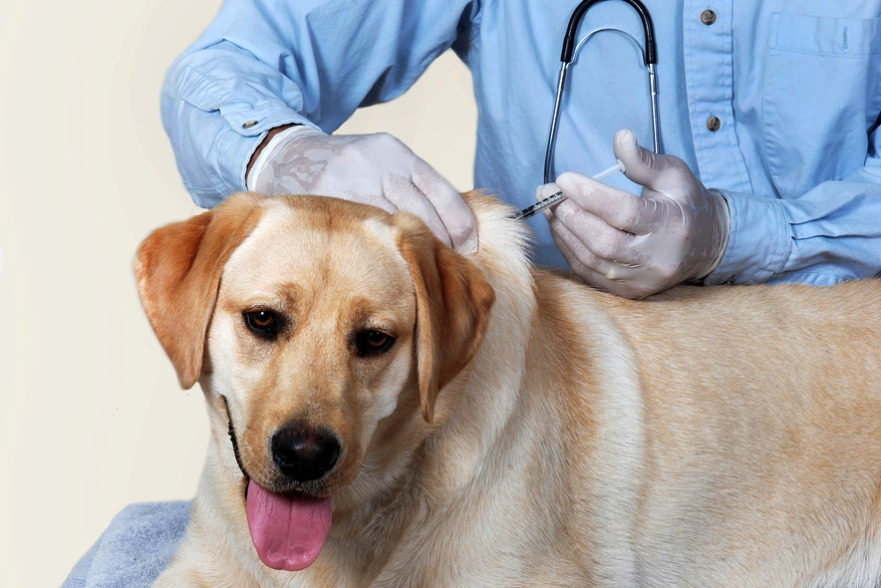 Vaccination against dog rabies
Vaccination against dog rabies Vaccination for rabies for dogs: side effects
By sending the dog to rabies vaccination, it is important for the host to understand that foreign substance will be introduced into her body and appearance of any complications after vaccination should not be surprising.
After vaccination, it is possible:
- body temperature increase
- salivation
- disorder of the chair
- edema of the ears and eyes
- behavior change
A frequent reaction to the introduction of the rabies vaccine is an allergy. It manifests itself in the first 5 to 10 minutes after the injection. Her first symptoms will immediately be noticed by a veterinarian and will stop the attack by administering an antihistamine drug.
IMPORTANT: Side effects are rarely observed when using a foreign inactivated vaccine( Nobivac, Eurikan ).
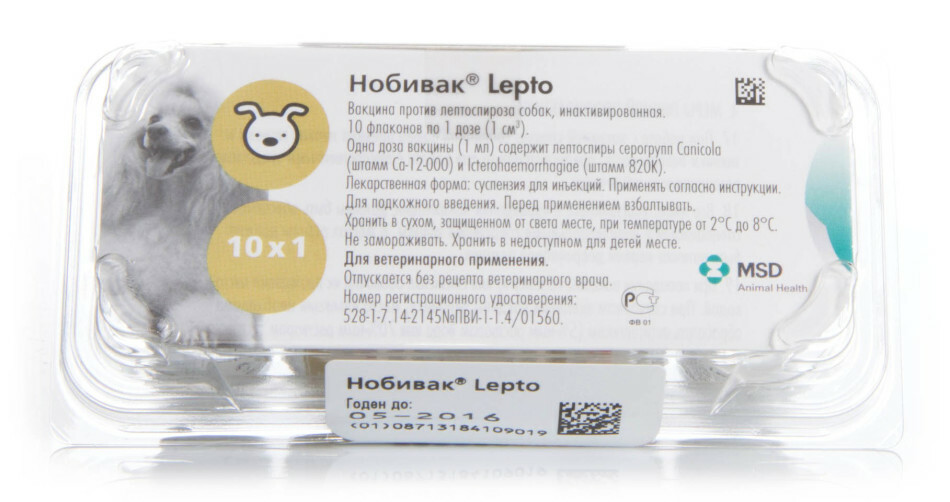 Nobivak - rabies vaccine
Nobivak - rabies vaccine A variant of the norm is the appearance of wiggles or seals on the skin of the dog at the place of administration of the vaccine. This reaction is not considered a complication and passes through time on its own.
If at the time of vaccination the dog has already been infected with rabies, but the symptoms of the disease have not yet manifested, after vaccination the animal will fall ill or even die.
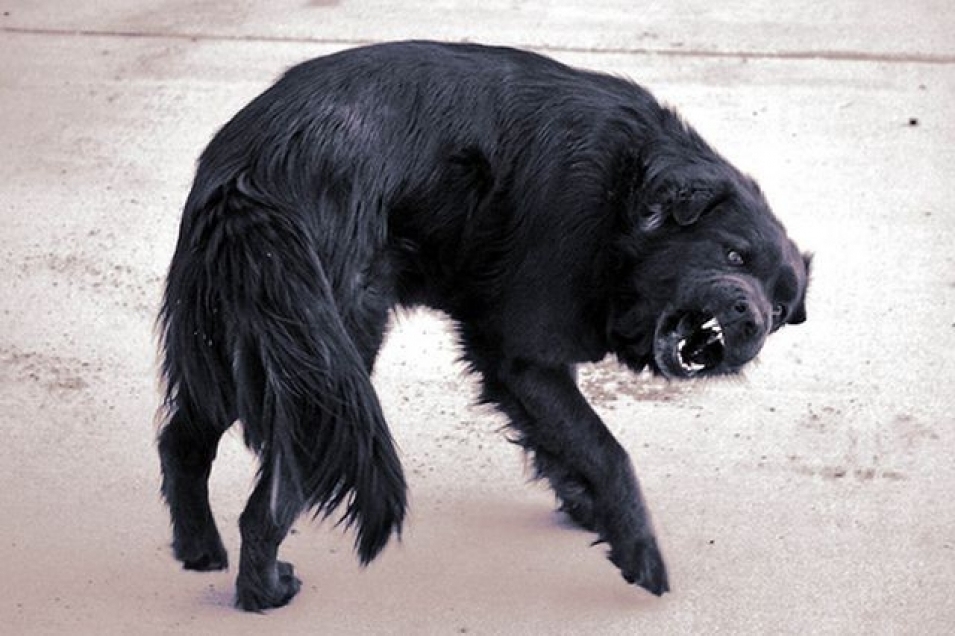 Dog will die of rabies if at the time of vaccination it has already been infected
Dog will die of rabies if at the time of vaccination it has already been infected Can a vaccinated dog get rabies?
A vaccinated dog can become infected with rabies if contact with a sick animal occurred earlier than 21 days after vaccination.
Infection with rabies vaccinated dogs is possible, but such cases are rare. Vaccination is a fairly reliable method of protection against rabies.
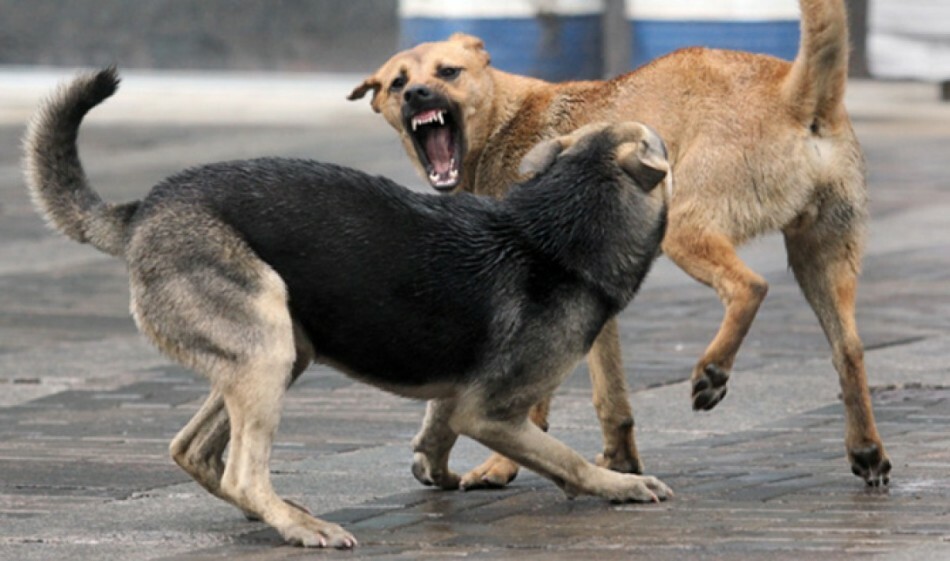 The risk of rabies infestation in a vaccinated dog is minimized
The risk of rabies infestation in a vaccinated dog is minimized Rabies treatment in dogs
No treatment for rabies in dogs is performed. Moreover, it is prohibited because of the huge risk of infection of the veterinarian's medical staff. A rabid dog is euthanized to reduce its anguish and protect others from possible infection.
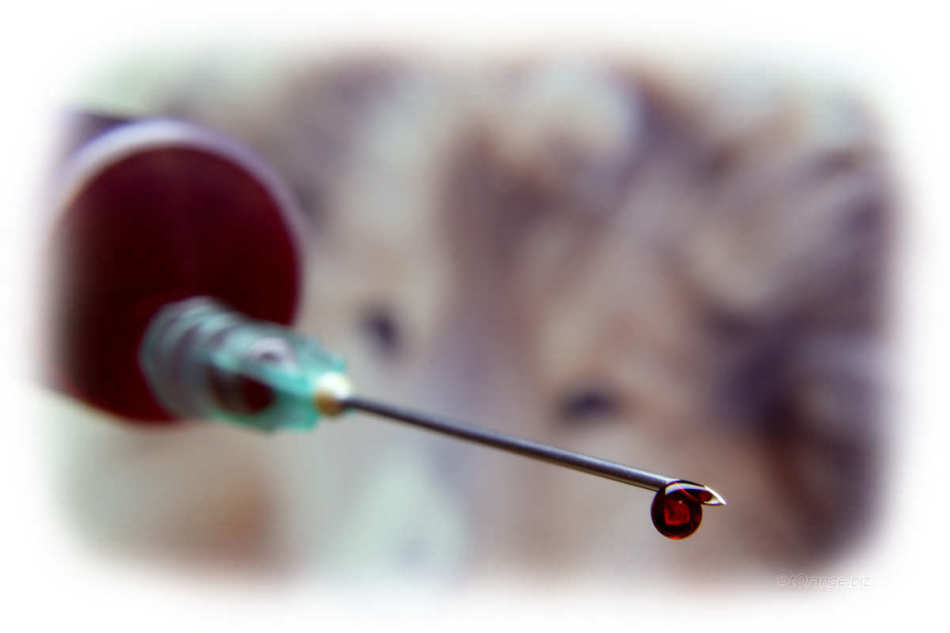 Rabies in dogs does not exist, sick animals are put to sleep
Rabies in dogs does not exist, sick animals are put to sleep Rabies prevention in dogs
The best preventive method for preventing rabies is vaccination. It's cheap, safe and efficient.
IMPORTANT: Hunting normal dogs must be vaccinated once a year, watchdog and decorative - every 2 years.
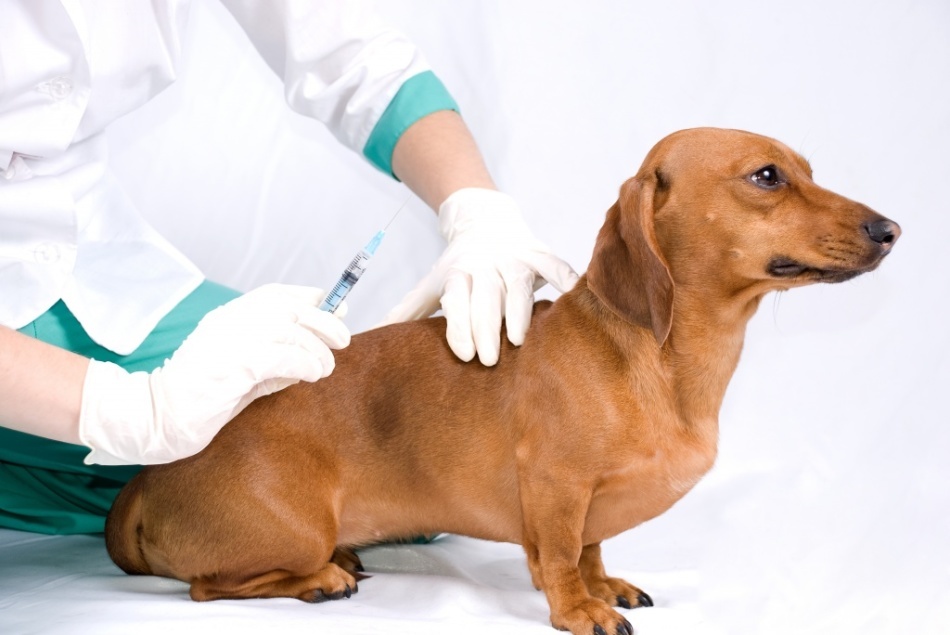 Normal dogs are vaccinated against rabies every year.
Normal dogs are vaccinated against rabies every year. . Also, avoid contacting your dog with wild and stray animals. Among the stray dogs that have strayed into flocks, there are often infected. Even a single insignificant contact with such a dog can become fatal for a domestic unvaccinated animal.
Inhabitants of disadvantaged regions should pay special attention to the behavior and condition of their dogs, note all cases of the appearance of wild animals in residential areas and report them to veterinarians.
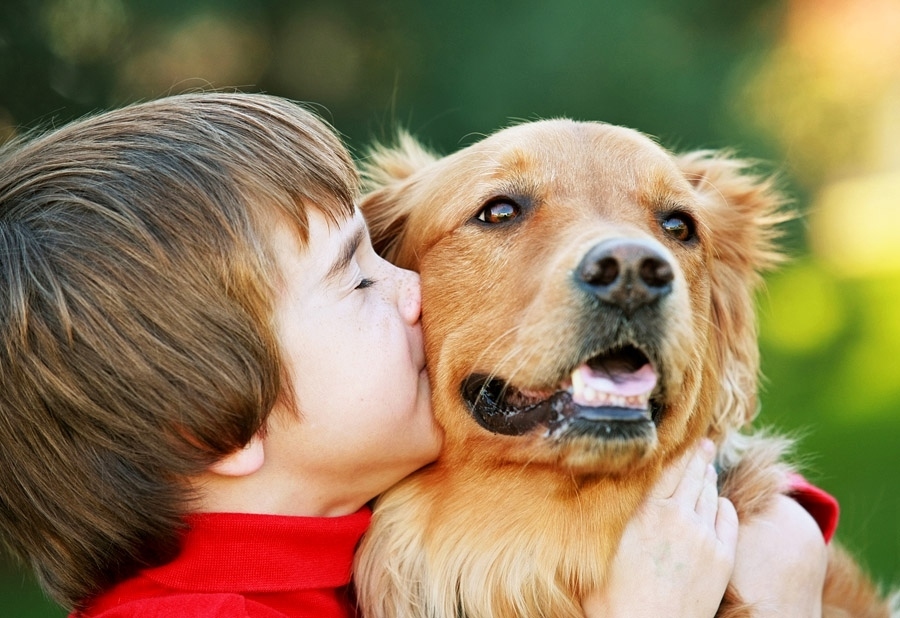 Rabies prevention will protect dogs and people in contact with them from
Rabies prevention will protect dogs and people in contact with them from disease Rabies is a fatal disease. She spares neither dogs nor people. There is no treatment for rabies, but the responsible approach of pet owners to vaccination can significantly improve the incidence of rabies and prevent further spread of the disease.
